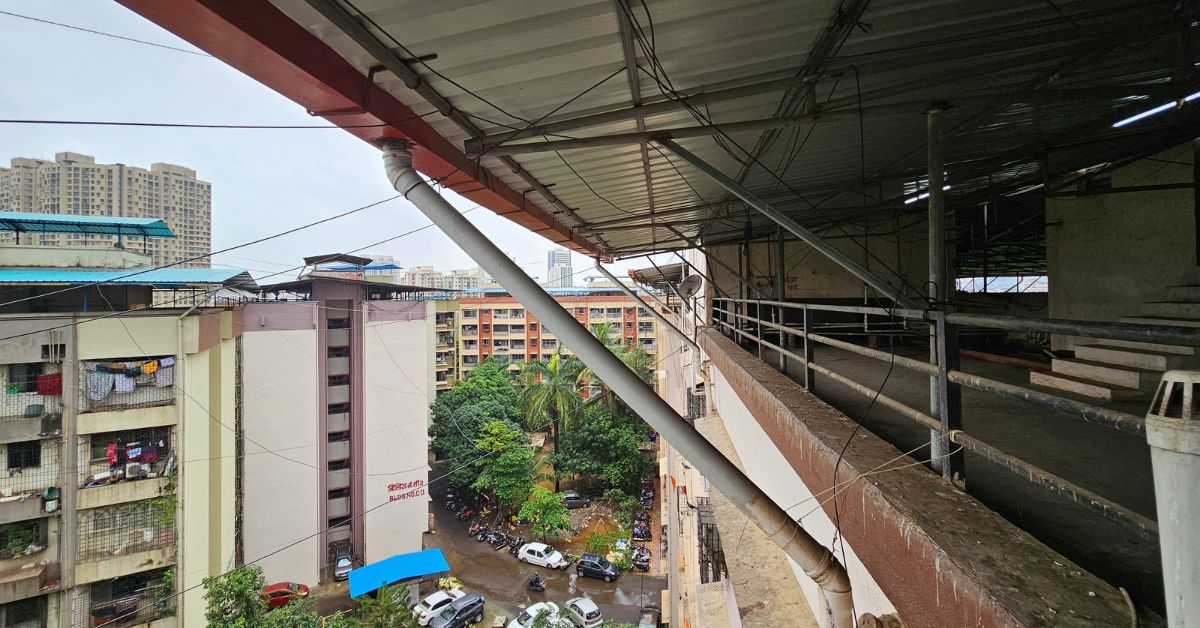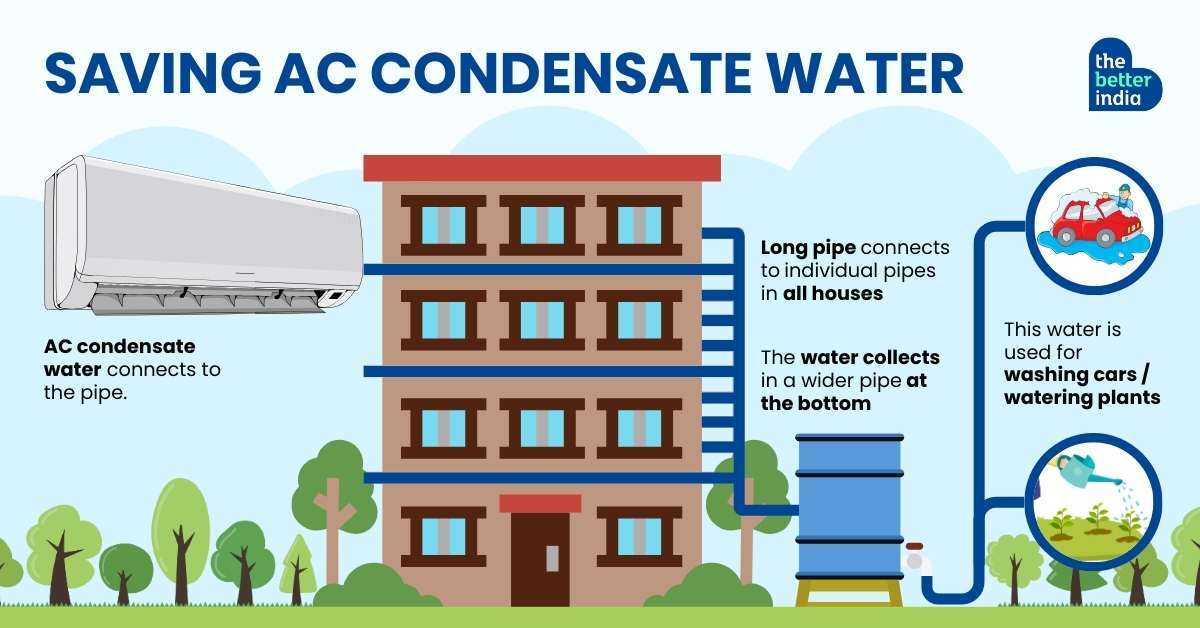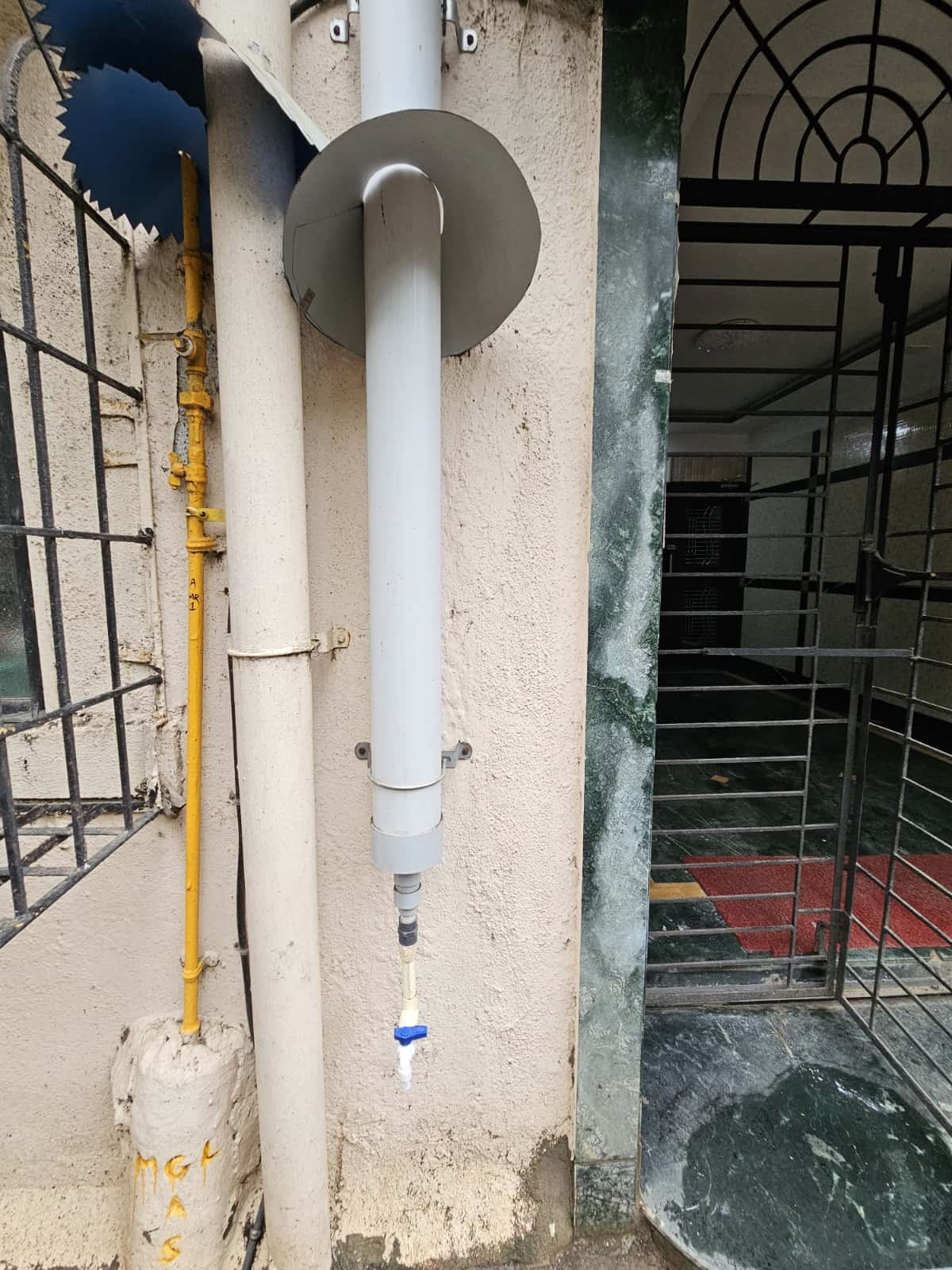Every drop of water counts. This should be a mantra for everyone as the world faces a severe water shortage. Do you know how much water is used every time you flush? In older toilets installed in India, almost five to ten litres of water is used per flush. For a family of four using the toilet at least three times a day each, that’s a staggering 3,600 litres of water per month!
While newer toilets come with low flush options, what can people with older toilets do? This question troubled the residents and management committee members of Saprem Co-operative Housing Society in Thane, Maharashtra.
Thane, like many parts of the country, has been facing a major water crisis in recent years. With reservoirs drying up, the Brihanmumbai Municipal Corporation (BMC) announced a 10 percent water cut starting in June 2024 to conserve the available water.
This has also impacted the water supply to the Thane Municipal Corporation (TMC). Consequently, it is now up to citizens to take action, both individually and collectively, particularly in gated communities and housing societies.
Instead of relying solely on the water supplied by the TMC and purchasing additional tankers, the residents of Saprem CHS decided to become self-sufficient in their water needs. How?
Read on to find out.
A panacea for water woes
Built in 1997, the society has two wings and 64 flats in total. Over the past decade, residents grappled with major water shortages. “We had several days when we had water supply only for an hour or so. We also had to call for a water tanker from outside, paying thousands of rupees every day. It was a very difficult time,” Avinash Shaligram, secretary, Saprem CHS, tells The Better India.
The problem was exacerbated in households where everyone would go to work or school and return to no water. After enduring this ordeal for months, the residents began brainstorming and coming up with different solutions. One thing was clear — they wanted to save water in any way they could.
The society has a water tank with a capacity of 20,000 litres. As they started breaking down the basics of water usage in their households, one number stood out — the amount of water used in the toilets.

“We found that every time we flush the toilet, it uses five litres of water. In a household of four members who each use the washroom four times a day, it amounts to 80 litres of water per day. For the entire society, that was a whopping 5,120 litres of water per day, more than 1/4th of the tank’s capacity,” adds Shaligram.
They wondered how to prevent this natural resource from being ‘flushed’ down!
To find an alternative water source, they conducted a geological survey and dug a borewell. They struck water 350 feet below the surface and began using this water for their toilets. This immediately solved their water woes, providing a 24-hour water supply!
Not stopping there, the residents sought a way to recharge the groundwater. To this end, they built a rainwater harvesting system. “The rainwater that was being collected on the terrace was going to waste, in a drain. We wanted a system that would collect this water and divert it into the borewell,” says Arun Deshmukh, management committee member, Saprem CHS.
How it works
Corrugated sheets have been installed on the rooftop with bars on the side. Eight pipes have been fixed across the length of the rooftop to collect rainwater. These pipes are connected to pipes on the ground that channel the water to the borewell.
Installed almost three years ago, this system has made the residents self-sufficient and prevents rainwater from going to waste. They have been using this water for their toilet needs and are now exploring ways to use it for other purposes. “We had the water tested but it was unfit for other use. We are getting it tested again now to see if it can at least be used for washing clothes,” says Shaligram.
Saving AC Water
Once this solution produced phenomenal results, the eager residents looked for further ways to save water. Another significant source of water wastage was the water from air conditioners (ACs). Almost every house in the society has an AC, says Deshmukh.

During summers, these ACs run all night and for long hours during the day, especially on weekends and in work-from-home situations. Generally, a one-tonne air conditioner produces 10 litres of water if used for eight hours — with this amount increasing based on the size of the AC. To prevent this condensate (a liquid obtained by condensation of a gas or vapour) from going to waste, Saprem CHS members devised a method to save it.
A long pipe runs down the building, with individual connections to each house to collect the condensate from their air conditioners. This water is funnelled into a wide pipe at the bottom of the building, which is fitted with a tap for easy access. This pipe can hold up to 15 litres of water. This water is used to water the plants and wash vehicles in the society.

“We have 25 cars and 80 two-wheelers. We are able to use this water to clean them, effectively reusing the water. In summer months, we also use it to water the plants,” says Deshmukh. Even if we consider that it takes about 10 litres of water to wash a car and five litres to wash a two-wheeler, this system saves over 19,000 litres of water per month!
The society members are now exploring ways to become completely self-sufficient for their water needs. Shaligram mentions that they are happy to guide other societies in implementing similar systems. The rainwater harvesting system and the AC condensate pipes each currently cost Rs 1 lakh to install.
“Water is a finite resource. We need to save it in whatever way possible,” he remarks.
Edited by Pranita Bhat